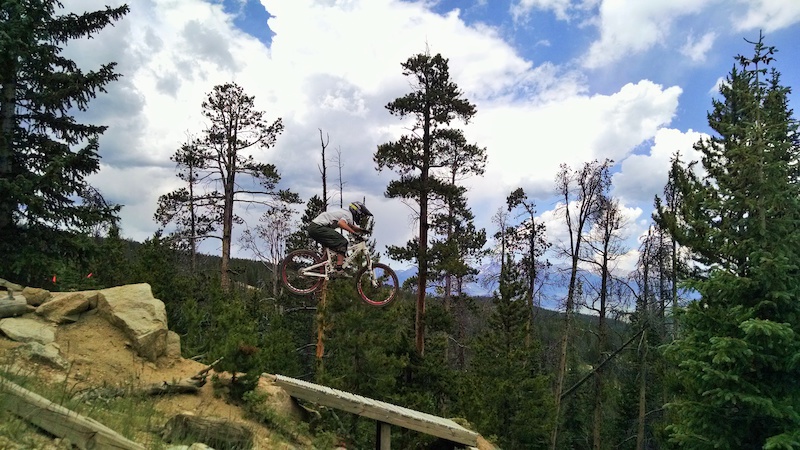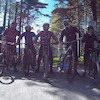Megavalanche: Finding the Right Training Schedule
You wouldn't step into the ring with Mike Tyson without proper training. The same thing applies to the Megavalanche, because to me there is no difference between Tyson and the Alpe d' Huez. They'll both kick my ass. That's why I've put on my grey jogging suit and have Bill Conti's 'Gonna Fly Now' blasting through my speakers. It's training time.
But how do you train for the Megavalanche? I asked MTB coach James Wilson from MTB Strength Training Systems or he had some pointers. Here's what he said. (You can read the original interview on my Wordpress blog, here.
‘First let me say this’, James starts. ‘With these races, where you ride thirty something kilometers, we all think that in order to ride effectively we need to be in real good shape, leading people to focus on cardio training. Of course this is necessary, but it’s not the most important thing. The skill aspect is. Good skills give you better balance and control, which means you can endure longer using less energy. Cardio training therefore should never go at the expense of actual mountain biking.’
‘Another thing that’s real important is flexibility. If you’re not able to touch your toes, you’re not going to be able to move well on your bike.’
‘Cardio becomes important when the race starts closing in and you need to get in shape. And when you do start this, don’t make it a monster Frankenstein kind of cardio, just focus on basic skills and exercises.’
On your blog you say that ones training should fit the type of race he or she is going to ride. How would you apply that to the Megavalanche?
First off, you should vary your training between three different rhythms when you go out and ride. Hard, moderate and light. You need a balance of these three. I’ve heard guys say they do sessions of three hours because it takes them 45 minutes to get warm. That’s because your body isn’t stupid. It thinks “oh here we go again, a three hour slog fest”, so it saves energy. It’s better to ride on a trail like you’re doing intervals. Ride as hard as you can for a short period, rest or switch to an easier rhythm and then repeat. This does not mean you should ride like this every time you get on your bike. It’s good to throw light or moderate riding sessions in the mix. I have days where I go out and try to pedal as little as possible and just really focus on my technique.
For a race like the Megavalanche, what’s the most important skill tip you would give?
There’s a lot of standing in endurance mountain biking. To hold that position for a long time is hard, so you will really have to practice that. That’s my number one recommendation: get used to standing pedaling. Siting should be used as a rest position, especially on the easier pedaling sections.
On your blog you name three training elements. Skills, cardio and strength training. I’m guessing the last one can help with standing pedaling. Which exercises would you advice?
With strength training it’s important that you don’t just train the different muscle groups. Instead you should focus on movement patterns. There are five basic patterns: hinging, squatting, pushing, pulling and a locomotive pattern. Build your exercising program around these five patterns. To train your legs for instance, hip hinging and squatting are good exercises. And don’t hesitate to use dumb bells or kettle bells. You need to add some load if you want to get stronger.
So how would you best combine these elements to a full training?
It depends on the amount time you have but I would recommend to do strength training at least twice a week next to your riding. If you’re on low altitude like you are (I live in the Netherlands) you may want to double your strength and interval like trail training. The Megavalanche takes place on great height, which means that your muscles will become anaerobic a lot quicker because your body isn’t used to the lower oxygen levels. It is the ability to deal with these anaerobic conditions that you want to improve. That can be done by getting stronger so your body can recruit more muscle fibers, and then train them to deal with anaerobic conditions using the interval method.
Now we know the basic elements a training for the Megavlanche should have, the next step is to design the full program. More on that soon!
James’ method is also mentioned in the book Mastering Mountainbike Skills by Brian Lopes and Lee McCormack. If you want to learn more you can also visit his blog.
Author Info:
Must Read This Week
Sign Up for the Pinkbike Newsletter - All the Biggest, Most Interesting Stories in your Inbox
PB Newsletter Signup


 Member since Oct 31, 2014
Member since Oct 31, 2014
Btw do you happen to know how the qualification works? I read that of each 200 that start in the qualifiers the first 20 go through to race the main event. Is that correct? Thanks!